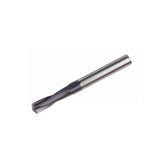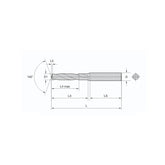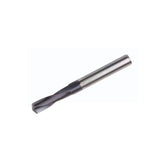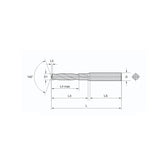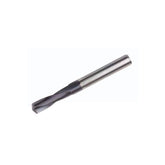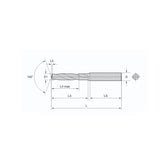How to Choose a Carbide Drill Bits with High Cost Performance?
A Comprehensive Guide to Choosing the Right Tool for Your Machining Needs
The market offers countless carbide drill bits that can be overwhelming. Since carbide drill bits look almost identical externally, it's easy to be misled by suppliers. This guide will help you make an informed selection.
Machining Stability
In addition to considering hole accuracy requirements, the stability of the machining equipment must also be evaluated when selecting a drill bit.
Machine stability is critical for the safe service life of the drill bit and drilling accuracy. Therefore, carefully inspect the working condition of the machine spindle, fixtures, and accessories.
Key Consideration: Vibration and runout in the machine can significantly reduce drill bit life and accuracy. Always check spindle bearings and tool holder condition before selecting high-performance drill bits.
Machining Accuracy
When selecting carbide drill bits, first consider the specific accuracy requirements of the drilling operation.
Generally, the smaller the hole diameter being machined, the tighter its tolerance. We categorize drill bits based on the size of the hole diameter to be machined.
Solid Carbide
Highest precision and rigidity
Best for precision holes
Carbide Tipped
Good precision, more economical
General machining
Indexable Insert
Economical for larger holes
Production drilling
Among the four types of carbide drill bits, solid carbide drill bits offer higher machining accuracy (e.g., tolerance range for a Ø10mm solid carbide drill bit is 0–0.03mm). Thus, they are a better choice for high-precision holes.
Avoiding Common Mistakes
When selecting carbide drill bits, avoid the following misconceptions:
- Selecting based solely on appearance: Since carbide drill bits look similar, judge quality through technical specifications and brand reputation.
- Ignoring machine compatibility: Even high-quality drill bits may cause machining failures if incompatible with the equipment.
- Overlooking the workpiece material: Different materials require different types of drill bits. Clearly identify the characteristics of the material being machined.
- Neglecting coolant delivery: Effective chip removal and cooling are critical for carbide bit performance.
- Focusing only on price: The cheapest option often leads to higher costs from poor performance and frequent replacement.
Conclusion
Selecting carbide drill bits requires comprehensive consideration of machining stability and accuracy, combined with specific processing requirements and machine conditions.
By inspecting machine status, defining accuracy needs, and choosing the appropriate drill bit type, machining efficiency and quality can be effectively improved. Solid carbide drill bits, due to their high precision and stability, are typically the ideal choice for high-accuracy machining.
Always consult with technical specialists and consider requesting sample testing before making bulk purchases. The optimal drill bit choice balances performance requirements with operational economics.
Carbide Tool Selection Guide
